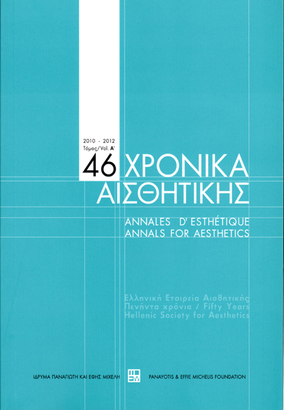Μυθολογίες του αρχαίου ερειπίου : φανταστικές αναπαραστάσεις της ελληνικής αρχαιότητας σε ευρωπαϊκά χαρακτικά (17ος-19ος αιώνας)
Part of : Χρονικά αισθητικής : ετήσιον δελτίον της Ελληνικής Εταιρείας Αισθητικής ; Vol.45, 2009, pages 231-250
Issue:
Pages:
231-250
Parallel Title:
Mythologies of the ruin : imaginary representations of the greek antiquity in european engravings (17th-19th centuries)
Author:
Abstract:
Ancient ruins have haunted the imagination and sensibility of intellectual Europe since the Renaissance, and especially in the second half of the 18th century through the experience of the Grand Tour. Europe’s relationship with Greco-Roman antiquity in its various identities - the antiquity of imagination, the antiquity of myth, the antiquity of visible, tangible remains -is a broad, multi-dimensional theme, one aspect of which in the 16th century has a particular impact on the illustration of Greek ruins in the 17th century. The drawings, paintings and prints of Roman antiquities by artists from the Low Countries have influenced the depiction of Greek antiquity in Dutch travel books.In the 18th century Rome remained a powerful point of reference as regards the European perception and representation of Greek ruins. Italian paintings and engravings (actual but mostly imaginary topographical views and architectural Capriccios) now played the dominant role, and became the direct and primary model, as attested by certain engravings of Greece executed mainly in the second half of the 18th century. All these images pronounce a discourse on the Sublime, the lofty character and noble grandeur of works of Greco-Roman antiquity, within the spirit of Neoclassicism, with intimations of the Romantic, while at the same time echoing the refined, elegant aesthetic climate of the 18th century with touches of Rococo picturesqueness. The ancient remains, the ancient ruins both in their natural state and also as an image, as a spectacle, are invested with a multiple meaning and charge, a fact which gives to visual representations a particular dynamic for their interpretation. In the first half of the 19th century the Greek Revolution, Romanticism, Orientalism and Philhellenism created new conditions for the relationship of Europe with ancient Greece. The dual nature of Greece (a timeless, mythical vision and the modern, real-life Greece) is the central element in the way Greek antiquity was perceived and represented.
Subject:
Keywords:
κλασικισμός, Ευρώπη
Notes:
Η διάλεξη πραγματοποιήθηκε στις 23 Νοεμβρίου 2009, Περιέχει εικόνες και βιβλιογραφία




